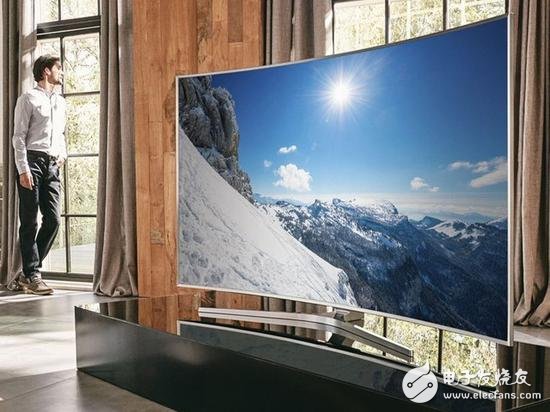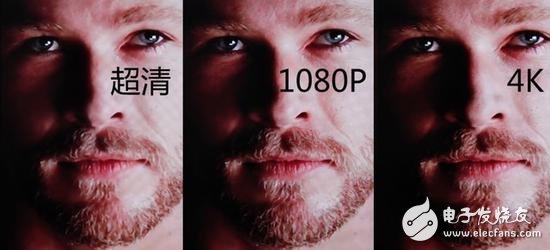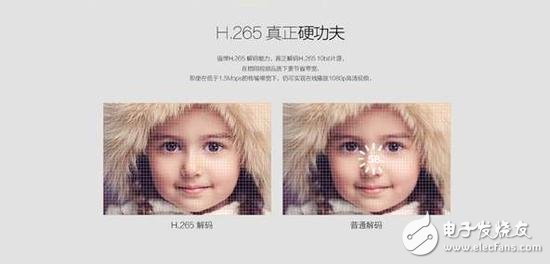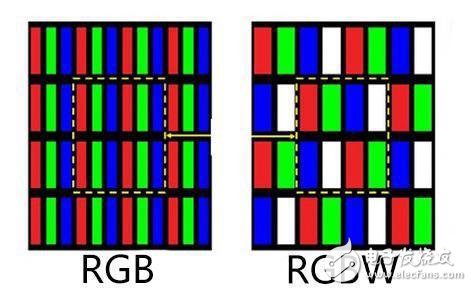Now the world is discussing 8K, 8K has become the mainstream development direction of the display industry. But today we don't mention 8K, let's talk about 4K that has been fired for a long time, because so far, many people see 4K is likely to be fake 4K.
We all know that 4K refers to the resolution of 3840x2160 or 4096x2160. The signal with a width of less than 3840 cannot be called 4K, and the height of less than 2160 cannot be called 4K. The same 4K signal also has different differences, such as the frame rate is 30Hz or 60Hz, the color space is YUV or RGB, etc., which will make the difference in picture quality more obvious for devices with very good display effect.

Don't worry about 8K, the 4K you see may be fake.
For example, the current maximum frame rate of the HDMI 1.4 standard is 30 Hz, while the maximum parameter for HDMI 2.0 is 60 Hz. The parameters of 60 frames are twice as high as 30 frames, the picture quality and details are better, the higher the number of frames, the smoother the picture, and the fast-moving angle of view, the residual image of 60 frames is less than 30 frames, the higher the value, the picture The closer to the real world observed by the human eye.

The increase in resolution has a great impact on image quality.
For 4K pictures, the difficulty of 60Hz implementation is that the amount of data is large and the bandwidth is high. Compared to the common 1080P 60Hz point frequency is 148MHz, the 4K 60Hz point frequency is 594MHz, which is more demanding for signal transmission and processing.
The editor teaches you how to distinguish between true and false 4K
Next, let's summarize how to distinguish between true and false 4K?
First of all, we can look at the parameter list of the product. If the resolution on the label does not reach 3840*2160, it is not 4K. Of course, the parameter table is the easiest place to fake. In addition, you can also check if the product is equipped with HDMI1. .4 or 2.0 interface, if not, it does not even qualify for 4K.

Secondly, if the 4K product you purchased does not support the H.265 video format, it is basically a fake 4K product. Because the 4 products just came out, the built-in chip does not have 4K video playback capability, or the decoding format is incomplete. Later, 4K technology became more and more mature, and the video format of H.265 appeared, which can support 4K video playback. Therefore, whether to support playback of the H.265 video format is the best way to measure the authenticity of a 4K product.

There is a significant difference between the two in the arrangement of the pixel blocks.
Another more intuitive way is to see if the logo in the product specification is "RGB" or "RGBW". RGB is called the three primary colors. These three primary colors show all the colors by different proportions, while RGBW means to add white (W) to the three primary colors. But the actual pixels of RGBW can only reach 3/4 of 4K pixels, about 2880*2160, the total number of pixels is about 6.22 million, which is 2 million less than the real 4K. All that is generally labeled "RGBW" is what we call pseudo 4K.
Write to the end:
Although the current 8K heat is very high, attracting a lot of attention, but it still belongs to the future. To be honest, the current situation of 4K is not very good, and everyone should not expect too much change from 8K. So today tell everyone how to distinguish between true and false 4K is to let everyone be less deceived, and look at the real visual experience brought by the current 4K.
However, due to technical and cost reasons, it is not widely used. In recent years, RFID technology has developed by leaps and bounds. With the development of large-scale integrated circuit and network communication technology, RFID technology has entered the commercial application field, and began to develop from the initial low frequency (125kHz) and high frequency (13.56mhz) to uHF (860 ~ 960MHz) and microwave. RFID technology has become one of the most promising information technologies in the new era because of its unique advantages showing great development potential and application space. In both low and high frequency bands, China has independently developed RFID chips in accordance with ISO14443 A, B and ISO15693 standards, which have been successfully applied in major projects such as city bus all-in-one card and second-generation resident ID card. However, in the uHF and microwave field, China started late, technology and products are still relatively short. In this context, this paper studies the design of 915MHz rf card reader. The system can be applied to vehicle monitoring, remote control, telemetry, access control system, identity identification, non-contact radio frequency smart card, wireless 485/232 data communication, safety and fire prevention and other fields.
915MHZ Rubber Antenna,915MHZ Antenna with magnetic base,915MHZ fiberglass antenna
Yetnorson Antenna Co., Ltd. , https://www.xhlantenna.com
